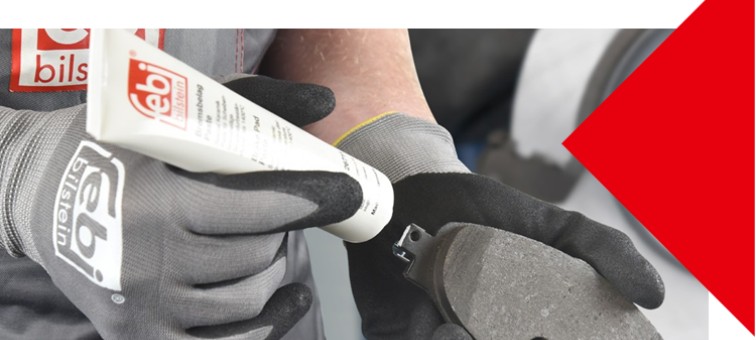Noise, Vibration, and Harshness (NVH) in Braking

The phenomena of noise, vibration, and harshness can affect the pleasant driving experience of any vehicle.
Brake noise is created by a high pitch vibration that you can hear. Imagine tracing the rim of a wineglass containing water with a wet finger. The glass resonates and a sound is generated. The vibration is created by the friction caused by your finger tracing around the rim of the wineglass. This, in turn, resonates within the glass containing the water, therefore producing a sound.
This is the same principle that is applied to the noises and vibrations that are generated by the friction between brake pads and discs. These are transmitted to the brake calipers. As a result, the entire brake system resonates to produce unpleasant noise.
.png)
Noise Suppression
There are many factors that must be considered to suppress brake noise and vibrations. These include the quality of materials, the shape, and torsion of the components, the driving environment, vehicle speed, and brake temperature.
Noise is often caused by the vibration of the pad against the disc where full contact is not being made. It can also be caused by failing or faulty parts such as shims and pins that have lost their tension, therefore creating sound waves. These sound waves can either be the high-pitched vibrations you can hear or the low-pitch vibrations you can feel.
Minimizing Vibrations and Noise
During the development of a new Febi brake pad, many technologies are used to improve comfort for both the driver and passengers by minimizing these unpleasant vibrations and noises.
Febi matches or exceeds the specifications of the OE brake pad, therefore retaining the original manufacturer’s benefits and features – such as chamfering and/or the addition of slots to ‘tune’ the pad so it makes less noise. The chamfers and slots change the natural frequency at which the brake pad oscillates so it runs quieter than a brake pad without these features.
There are also various types of shims that may also be fitted to the steel backing plate to dampen vibrations between the pad and caliper. These shims act like a cushion; they absorb noise-producing vibrations. Some shims may have a half-moon cut-out present, which allows the piston to push the brake pad at a desired angle, thus reducing noise and creating a more unified and even pad wear. These are generally fitted to directional brake pads which can only be installed in one direction.
Brake pads may also come supplied with anti-rattle clips or springs that minimize play between the pads and caliper to further dampen vibrations during the initial engagement of the pad. There are pads with additional weights: these are added during the development phase to minimize vibrations and noise.
Servicing the Brake System
When servicing and replacing friction components of a brake system, there are several important parts that need to be checked to both ensure correct functionality and minimize unwanted brake noise.
These include the condition of the brake calipers and carriers, plus any other hardware, to see if they are worn, ceased, or corroded. When fitting new brake pads, make sure all corrosion is removed from the pad and caliper abutment points and fit the new brake hardware. Lubricate the abutment points to ensure free movement and efficient braking by using the Febi anti-seize ceramic paste. Avoid the use of copper grease as this can potentially affect ABS signals and encourages galvanic corrosion. It also prevents the brake pad from moving freely, which can also be a source of the noise.
If the brake discs are heavily scored or lipped, they will need replacing as the rough surfaces cause noise. Also, make sure the hubs are clean and check for lateral runout by using a dial test indicator. Then, check the tolerances with the vehicle manufacturer’s data before fitting the new discs. It is important to clean the hub sur- faces before replacing the brake discs, otherwise, a brake judder could occur.
For quiet, effective brakes, make sure you fit quality braking parts and the appropriate accessories from Febi‘s extensive range whenever you service the braking system.
Rely on tested OE matching quality replacement parts from Febi. The entire range of braking parts can be found at: partsfinder.bilsteingroup.com.

